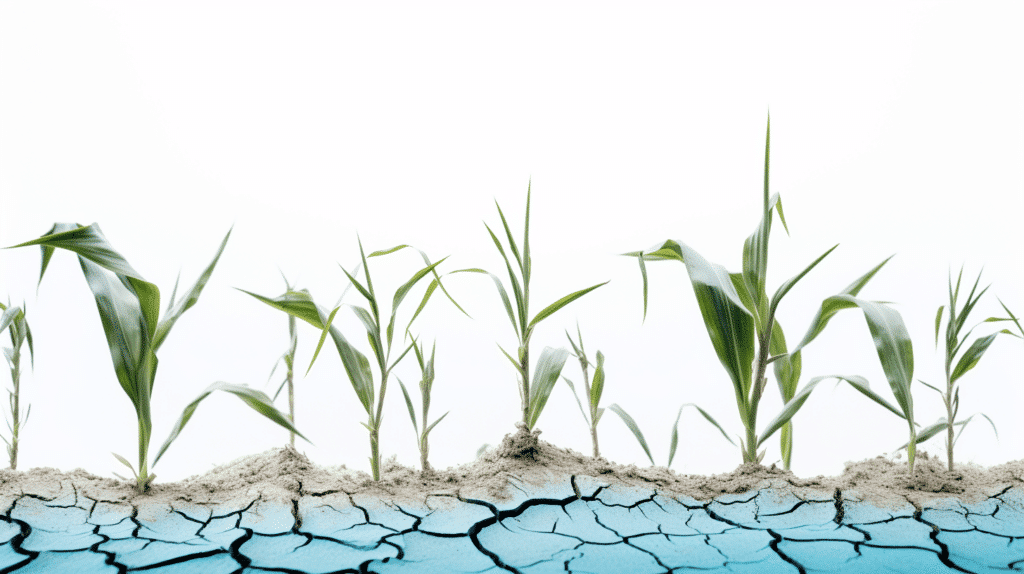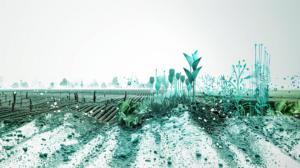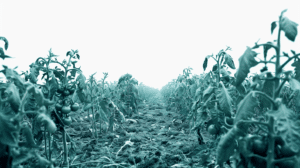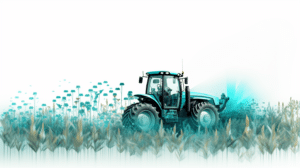What food and beverage companies can learn from the summer of 2022 regarding drought resilience?
The summer of 2022 saw record-breaking temperatures, the highest in 500 years. An intense series of heatwaves across Europe, paired with unusually dry conditions, led to a summer of extremes in terms of temperature, droughts, and wildfires in the northern hemisphere. The lack of drought resilience leads to significant disruptions in the food supply chain.
The water levels of major rivers, like the Rhine in Germany, were so low that cargo ships were having difficulty traveling fully loaded, disrupting food supply chains across the continent. The Danube, which snakes its way through central Europe to the Black Sea, shrunk as well, hampering grain and other trade.
Not only are transportation paths disrupted, but irrigation paths are also disappearing as well, with Italy’s Po river setting a grim example. Halfway across the world, China and India suffered extreme temperatures and a lack of rainfall that spelled devastating consequences to agriculture.
Summer Harvests Withered
Signature foods from around the world were ravaged this summer by blistering heat and drought, lowering farmers’ yields and hurting agricultural revenues. In France, the EU-protected gourmet Lautrec Pink Garlic sizzled in the heat, losing a third of its usual production, while winegrowers suffered major damages as their grapes withered on the vines.
The drought created a domino effect on other food supply chains around the world. With record temperatures causing substantial damages, harvest timelines have shifted, and farmers had to begin harvesting weeks earlier.
Reduced water supplies are making it harder for farmers to irrigate fruit and vegetable crops and tend to the soil – leading to potential food shortages and price spikes, affecting everyone from farmers to manufacturers, from retailers to consumers.
These dry spells have exposed the vulnerability of developed economies to climate change, showing no one is immune to its devastating effects. The disastrous combination of climate change and mismanagement of natural resources, inefficiencies and overconsumption has led to a potentially irreversible shift from short-term land degradation to desertification.
Droughts in Numbers
Since 2000, the global number and duration of droughts have increased by 29%, compared to the two previous decades. According to the European Commission, 47% of the continent was under drought warnings this summer, with an additional 17% in alert conditions. Yield forecasts are down 16% for grain maize, 15% for soybeans and 12% for sunflowers compared with the average of the previous five years. Extreme weather conditions are predicted to reduce global rice yields – the most important staple food in the world – by 10.6% in the current decade and by 33.6% by the end of the century. These crops represent a significant share of the world’s agricultural production and are crucial for achieving food security. The implications of this go beyond plant-based food production; dairy and livestock farmers rely on grains to rear their animals, and if animals and pastures are suffering because of weather, then it impacts the animals and reduces the production of dairy, butter, milk, and meat.
More than 689 million people living below the extreme poverty line in developing countries depend on root, tuber, and banana crops for food and income. These crops – which include potato, cassava, sweet potatoes, yams, taro, and yautia – have immense potential for reducing hunger and malnutrition and helping smallholder farmers adapt to climate change by reducing their dependency on grains.
Since the 1960s, there have been significant increases in the production of these crops, particularly cassava in Africa and potato in Asia. However, temperature increases pose a major challenge to increasing production.
Water supplies are critical as root crops are water-demanding for long periods and highly sensitive to drought and heat events. The increased temperature-compromising water and nutrient uptake by root systems led to dramatic reductions in crop yield, such as the ones experienced this summer by British carrot, turnip and potato farmers.
When it Rains it Pours
Global warming is expected to increase the number of water-stressed areas and heighten water stress in already affected regions. Even without extreme forecasts materializing, the current water demand already exceeds supply due to overpopulation and over-extraction. Farming suffers as rainfall becomes more unpredictable, and rising temperatures accelerate the evaporation of water from the soil.
These extreme weather conditions have taken farmers and the agricultural industry as a whole on a roller-coaster ride. At one point, too much rain had farmers delaying planting. Later on came the drought, halting activities to the point where dying trees had to be uprooted due to a lack of access to irrigation water.
Prolonged periods of drought change the nature of the soil, hampering its ability to absorb water. Once the rain finally reappears, floods – the twin menace of droughts – can wipe out crops and overwhelm storage systems. The deadly floods in Pakistan posed a very recent demonstration of this destructive dynamic.
The increase in droughts has an array of damaging effects on human life, the economy, biodiversity and water storage and flows – limiting crop growth, fueling food shortages and wildfires. It is expected to worsen in the coming years as temperatures continue to rise.
Solving the Problem
Ongoing industrialization, the continuous pressure that population growth has put on resources, and the effects of climate change mean that water has become more precious than ever before. The potential for intensifying droughts and increasing water scarcity demands a new paradigm for water management that builds on proactivity and preparedness, as well as prioritizes holistic and integrated solutions. Creating long-term drought resilience requires developing smarter, leaner irrigation methods, supplementing tradition with science and data – more specifically – using agronomic data to improve activities in the field.
Agronomic data is key to building climate resilience – allowing farmers and their stakeholders to make efficient use of resources such as water and chemical inputs through multilayered data analysis and agronomic insights.
One of the challenges posed by climate change is that it creates unprecedented circumstances and scenarios, requiring constant assessment and reassessment, experimentation, and adjustment. Relying on traditional best practices may prove impossible as weather extremes continue to break records, and rewriting the playbook to foster more resilient, sustainable farming is therefore an urgent strategic priority.
Agritask’s data-driven agronomic platform aggregates agronomic data from multiple sources, providing real-time insights into crop health and production risks. Agritask enables farmers and food and beverage companies to enhance their climate resiliency by efficiently utilizing resources and predicting disruptions. The more granular information farmers and other stakeholders can get about water supply, the better they can use or save resources and improve crop yields even in drought conditions.
to a report from the UN’s Intergovernmental Panel on Climate Change, food systems accounted for 21 to 37 percent of total anthropogenic greenhouse gas (GHG) emissions between 2007 to 2016. The agriculture industry as a whole needs to take an active role to reduce agriculture carbon emissions by enhancing their potential for carbon sequestration.








